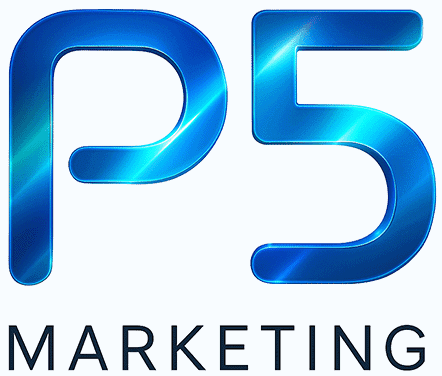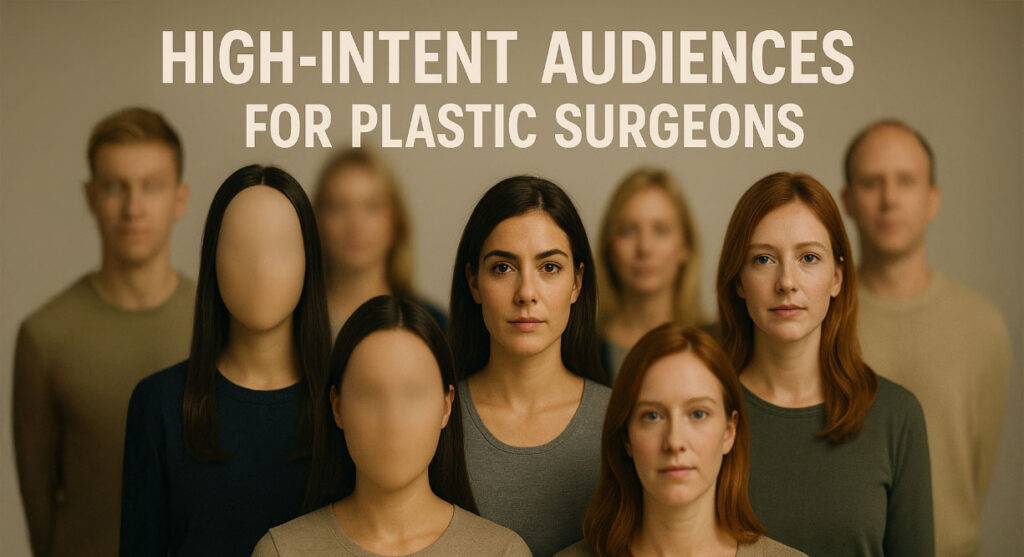The Secret to Growing Your Plastic Surgery Practice
If you’re a plastic surgeon looking to attract more patients who are genuinely ready to book, you’ve probably heard the buzz about high-intent audiences. But what does that really mean, and how can it change the game for your practice? Picture this: it’s the middle of the night, and someone’s on their phone searching for “breast augmentation near me.” This isn’t someone casually browsing for inspiration. They’re serious, they’re researching, and they’re close to making a decision. That’s the essence of a high-intent audience: people actively seeking specific procedures, such as rhinoplasty or facelifts, including details about surgeons and results in their area.
Compare that to low-intent folks, who might stumble across your ad while scrolling through a lifestyle blog or Instagram feed. They’re just gathering ideas, not necessarily ready to pick up the phone or schedule a consult. High-intent searchers are way further along in the process. They’ve moved past the daydreaming stage and are motivated to act, often already informed about what they want.
I remember working with a client about a year and a half ago who made a simple switch in their Google Ads strategy. Instead of chasing broad terms like “plastic surgery,” they honed in on specifics such as “best rhinoplasty surgeon in Dallas.” The results were impressive. Consultation requests jumped, and the leads were of better quality, people who showed up prepared rather than needing a lot of hand-holding.
What Sets High-Intent Audiences Apart?
In the world of digital marketing, high-intent audiences sit at the bottom of the funnel. These are individuals deep in their research, maybe even checking out before-and-after photos on your site. On the flip side, general audiences are at the top, like women in their 20s to 40s, interested in wellness. They might require months or years of nurturing before they’re ready to convert.
The numbers tell a compelling story. High-intent searchers often convert at rates up to 50% higher than those broader groups. If you’re pouring money into reaching curious browsers, your costs add up quickly. I’ve seen leads from high-intent campaigns come in at $5 to $10 each, while cold audience ads can hit $50 or more per booked consultation.
Think of it like fishing. Going after general audiences is like throwing a net into the vast ocean and hoping for the best. Targeting high-intent people is more like heading to a well-stocked pond where you know exactly what you’ll catch. It’s efficient and gets results faster.
This approach pairs well with identifying anonymous website visitors, something I’ve covered before. When you combine that with high-intent targeting, your patient pipeline fills with folks who are eager to book.
The Real Value for Your Practice
Focusing on high-intent audiences boosts your return on investment by cutting waste in ad spend. You reach people aligned with your specialties, leading to happier patients and fewer cancellations. In a competitive field like plastic surgery, this gives you an edge, getting your message in front of motivated searchers first.
Plus, it keeps things ethical and compliant, since you’re dealing with informed individuals and sticking to medical marketing rules. No misleading promises, just targeted help for those already seeking it.
How to Put High-Intent Audiences to Work
To make this practical, start by building campaigns around real search behaviors. Create custom audiences based on queries like “facelift recovery time” or “affordable breast implants in Houston,” rather than vague interests in beauty.
With Google Ads, prioritize procedure-specific keywords and segment your budget accordingly. For email outreach, tailor messages to those who’ve shown interest in particular treatments, not just general subscribers. Tools like Google Ads Manager and Meta Business Suite make this easier, especially if you use pre-built, privacy-compliant audience lists to skip the heavy lifting.
Always prioritize compliance: use anonymized data and follow privacy laws. And don’t forget to test. Run A/B experiments, monitor click-through rates, and track how many leads turn into actual consultations.
One standout example comes from a surgeon in Los Angeles who refocused his ads on his specialty procedures. In just three months, his consultation rate climbed by at least 30%. It wasn’t luck; it was about delivering the right message to the right people at the perfect moment. This builds on strategies like recapturing lost traffic through automation and personalization.
Wrapping It Up: Focus on the Ready-to-Act Patients
The takeaway? Prioritize those patients who are signaling they’re ready. That’s where real growth happens for your plastic surgery practice. If you’re curious about optimizing your online presence for local searches or mobile users, stay tuned for more tips. In the meantime, consider auditing your current ads to see how high-intent targeting could fit in. Your next wave of patients might be just a targeted campaign away.

